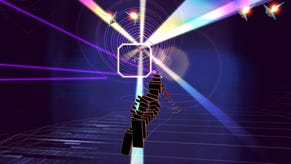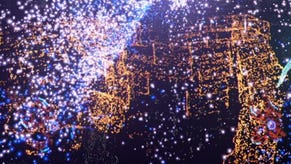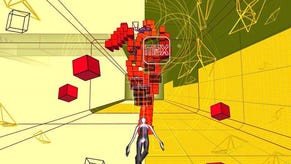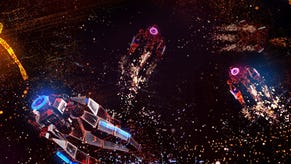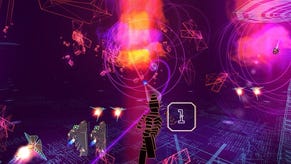Rez Infinite gets surprise - and very welcome - PC release today
Miz: "We need much more resolution. It's not enough yet."
Rez Infinite, last year's VR-enabled update and expansion of Tetsuya Mizuguchi's classic 2001 head trip, now has a PC version - and it's released today on Steam.
Like the PS4 version, Rez Infinite on PC supports VR - via both Oculus Rift and HTC Vive headsets - and 4K display resolution, and includes Area X, a new stage that is an effective demonstration of what a Rez sequel would (will?) look and play like today. Unlike the PS4 version, Area X is unlocked from the start on PC.
As you would hope for a PC edition, flexibility is brought to the fore with a comprehensive range of display and control options. You can play Rez Infinite on PC using a controller or mouse and keyboard and, in VR, with headset head tracking, Oculus' Touch controllers or the Vive wands. As added bonuses, you get online leaderboards, a View Mode that lets you pause the game and look around (terrific in VR), and even higher resolution textures than the PS4 game. Buy Rez Infinite on PC in its first month on sale and you get a free upgrade to the Digital Deluxe edition, which includes a seven-track soundtrack sampler, a digital art book sampler and some desktop wallpapers and avatars.
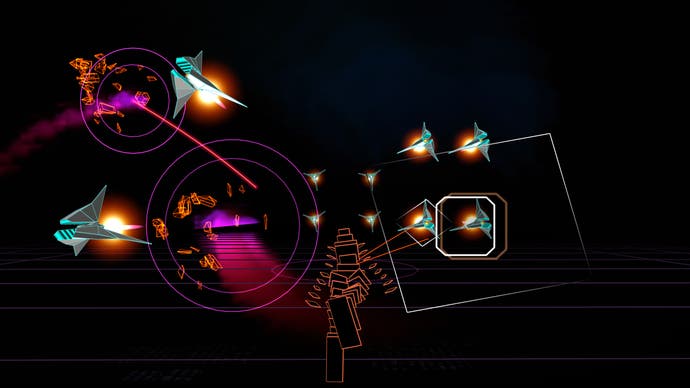
Digital Foundry's John Linneman has tested Rez Infinite on PC and found it to be a superb, well-optimised port that runs well across a very wide range of PCs and on both headsets. He even got the classic game running in 16K!
Reviewing Rez Infinite on PS4 last year, Martin declared it VR's killer app - and if you've tried Area X on a headset, you would be hard pressed to disagree. I've been playing the PC version on a boring old monitor, and I'm struck by how gorgeous and thrilling the classic game is, 16 years later; the only appropriate response to Area 5's thumping history of life, the universe and everything is, still, awe. Mouse control is a wonderfully natural and fluid way to play it.
Area X, meanwhile, is no mere bonus stage but a dazzling reinvention of the Rez aesthetic, swapping vectors for particles, wireframe futurism for a dizzying, glittering firework spectacular. It's gently free-roaming, rather than on rails, but this doesn't break the formula. While it's clearly designed with VR in mind, it works great on a monitor, drawing you in, saucer-eyed, across your desk. One assumes that it's a blueprint for Rez 2; now that Mizuguchi's Enhance games owns the rights to the series (Rez Infinite on PC is a wholly indie release), that's something we might well see.
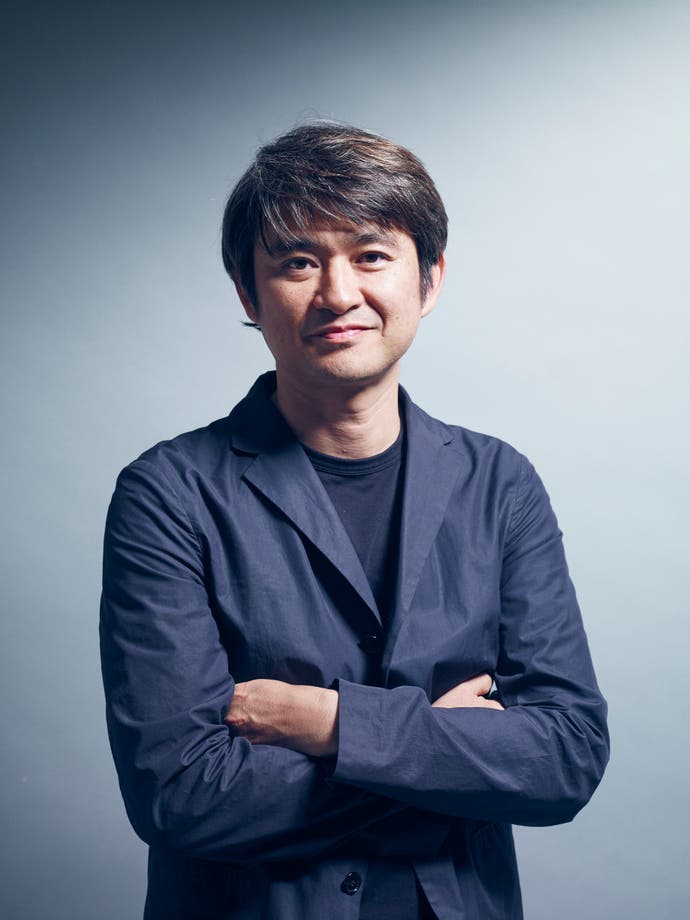
I met Mizuguchi in London a couple of weeks ago to talk about Rez's PC port and his fascination with advances in game technology. Tall, dressed in sleek black leisurewear and speaking a slow, dreamy English, he radiated calm and seemed like a man who would quite happily remake Rez on new technology platforms for the rest of time; this game, it seems, is his life's work.
"I get inspiration from technology innovation all the time," he says. "My game, Rez, needs all the time the highest res, highest tech. That is the power to move you emotionally and physically. Finally we got 4K, VR and 3D audio, so this is a big, big motivation to remaster Rez."
But Mizuguchi still isn't satisfied. "We need much more resolution. It's not enough yet, not enough yet. I'm dreaming the future of AR [augmented reality], MR [mixed reality]... I think that VR is just the beginning. I heard 8K is, how can I say, the singularity point for the human eye. So over 8K we can't see the detail any more. Maybe in 10 years, 8K in each eye! If we had that kind of technology, using MR so it's like this..." He gestures to the clear glass water bottle on the table and trails off. That would be enough? "That's enough resolution. Then the next level and next evolution would be creative," he says.
Not that he isn't making creative steps forward with Area X. "I thought X should be a new experience that is more rich and emotional and fun to play, with free movement in the world... What kind of Rez can we make? That is the inspiration." Making it work as a musical experience wasn't easy, he explains, because a linear musical score naturally transposes onto a lane shooter, but doesn't jive so well with player freedom. "But we tested it many times and we tuned it many times, and we found we could create it... You can get the music with a free feeling. To me, this is big, the next step."
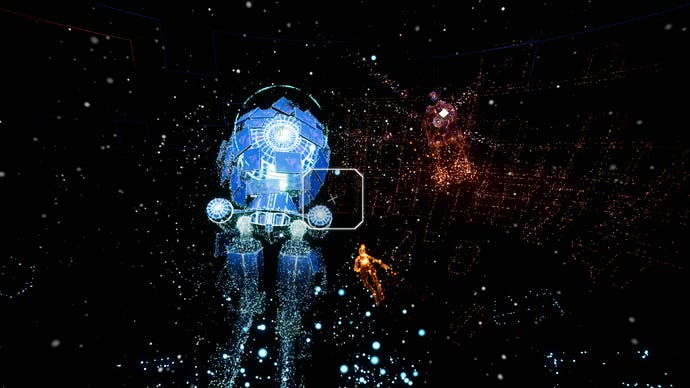
Area X has an abstract storytelling element, too. Mizuguchi talks about how he wanted his PSP game Lumines to take players on an emotional clubbing journey, from sunset at the beach, through a dark, intense rave, to a chilled after party, then pulling back to show the sun rising over the Earth - all via the medium of a block-clearing puzzle game. "We can do that, even in a puzzle game! Some people cry!" he says with evident satisfaction. "Area X is also like that. There are many elements we put into it... It's like moving architecture. It's really fun to create and fun to tune the detail; if you change the sound effects a little bit, you totally change the feel."
It's interesting, and rare, that Mizuguchi takes creative inspiration from such unpresposessing technological advances as pixel count. "Maybe I'm a technologist!" he laughs, when I put this to him. (When I ask him about Nintendo Switch, he says its "HD rumble" haptic feedback is the feature he finds most intriguing.) But he's not interested in using new technology for verisimilitude. As he often does in interviews, he invokes the phenomenon of synesthesia and his favourite artist, Wassily Kandinsky. "It's very exciting to create a new experience... How can I make the magic and illusion? How can I move the people emotionally - and physically, too? I'm not so excited to generate just real things. It's boring to me."


